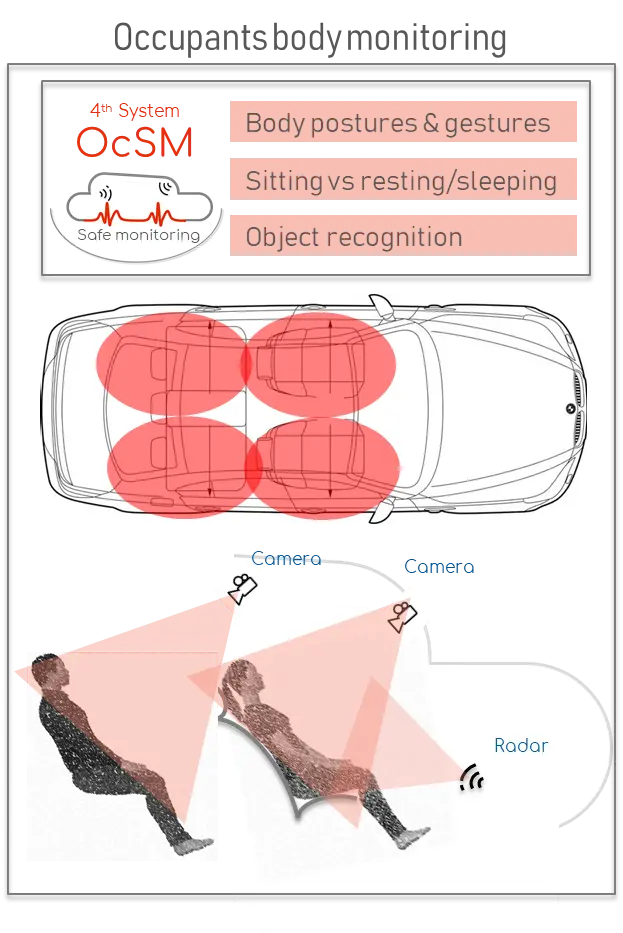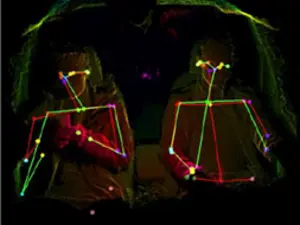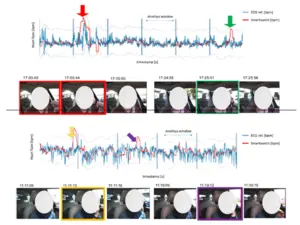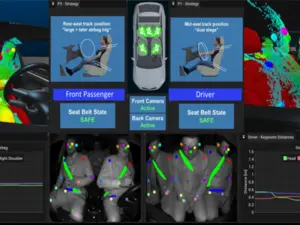Research at THI in the field of OMS has progressed dramatically over the last 10 years, ranging from building small driver monitoring systems for cockpits to driver distraction systems and multimodal SOTA detection of occupants with the fusion of optical and radar systems to measure different parameters for adaptive airbag deployment.
With advances in automotive technology, ensuring safety and comfort in vehicles has become a primary concern. The increasing automation of vehicles allows occupants to take over non-driving tasks, which affects their seating position and favors so-called out-of-position situations that pose a major safety risk. In other words, occupants could be killed/injured even if safety systems are used. At best, a system is needed that takes such conditions into account and passes this information on to the safety systems before they react. This is where the vehicle interior monitoring system comes into play. These systems are either optical system bases or radar systems or a fusion of both systems with other sensors of the vehicle that measure the occupants' positions, poses, gestures/actions and vital signs and use this information for low-stream safety systems (airbags/safety belts) that help analyze the occupant's status during the crash or uncertainty and help estimate the severity of the crash, along with external perception data for adaptive or safe deployment of the airbag for a specific person. This system is also able to recognize the different occupant classes (large man, small woman, child or infant) and decides to adapt the deployment of the airbag according to FMVSS guidelines.










![[Translate to English:] Logo Akkreditierungsrat: Systemakkreditiert](/fileadmin/_processed_/2/8/csm_AR-Siegel_Systemakkreditierung_bc4ea3377d.webp)








![[Translate to English:] Logo IHK Ausbildungsbetrieb 2023](/fileadmin/_processed_/6/0/csm_IHK_Ausbildungsbetrieb_digital_2023_6850f47537.webp)


